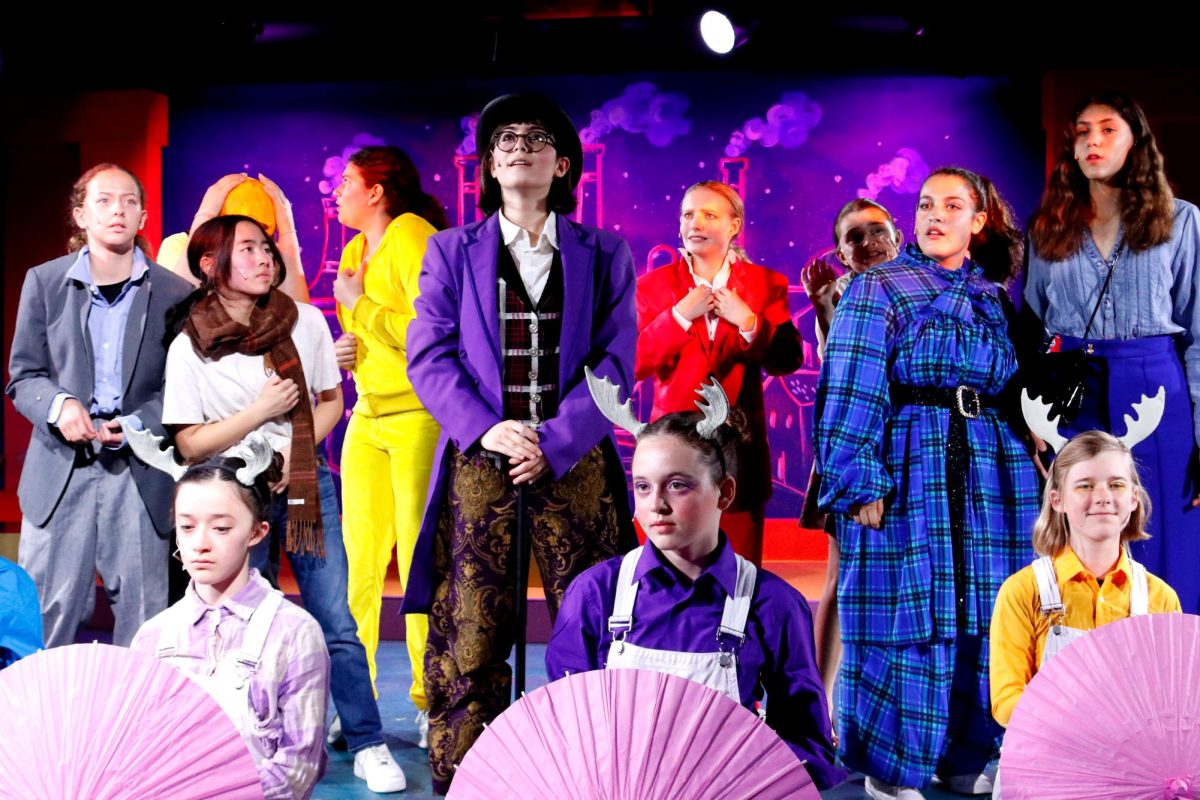From the launch of SixDegrees in 1997, social media has become a rapidly growing source of entertainment, advice and connection. Over 4.9 billion people have social media accounts worldwide. With countless influencers across platforms, it seems impossible to not get caught up in the latest — seemingly harmless — trends.
In order to create a social media account, users are required to be 13 years or older. This is due to the Children’s Online Privacy Protection Act passed by Congress in 1998, banning the collection of children’s personal data without parental consent. However, many under 13 ignore these rules and create accounts at ages as young as 8.
According to the American Academy of Child and Adolescent Psychiatry, 75% of teens ages 13-17 have at least one active social media profile. As these under 18 users continue to use social media, they risk behavioral and mental changes.
Social Media Changing Teenage Behavior
According to a survey conducted by Pew Research Center, 43% of teens said they felt “pressure to only post content that makes them look good to others.” This idea of “looking good” is influenced by the content teens consume on social media.
Lauren Sekula, a sixth grade English teacher, has been teaching for 15 years. Over this time, Sekula said she has noticed an increase of technology and social media usage among her students.
“Over the past decade, teachers have been very hyperaware of student anxiety and anxiety rising in preteens and teens. I think kids are growing up a little bit faster,” Sekula said. “I feel like if they have exposure to more social media, they’re seeing people who are not necessarily their age but are telling them and influencing them, if you will, to act or dress or put on makeup or do their hair in certain ways, and they’re following it.”
The Oracle sent out a survey to 490 Archer students about their experiences with social media. This survey received 54 responses. Many respondents wrote their vocabulary and clothing are heavily influenced by social media content and creators.
“My perception of my body has altered to conform to the norms that social media perpetuates. I think that’s the main thing about social media,” Uma Nambiar (‘25) wrote in her response. “A few smaller things are how my conversations are very much centered around trends and influencers, and the time I’ve spent doing other substantial things have significantly decreased.”
Losing Connection to Childhood
Similarly to Sekula, a 2022 study found that routine viewing of sexualized social media content linked to increased maturity and self-sexualization within adolescent girls, in addition to mental health consequences such as disordered eating.
Sixth grader Arianna Aram said she does not have social media, but she has seen those with social media place greater emphasis on their appearance and style, wearing more “mature” clothing than others at the same age.
“Some of my peers that do have [social media], they are a little more inappropriate or they are a little more popular and care about their looks and everything,” Aram said. “I care about my looks, but not as much as they do.”
Sekula said the appeal of being older seen in teens and social media users today is similar to how teen dramas often cast older adults to portray teens. She said this content tells teens what they should look like and how they should act.
“For my generation … you were a teenager, and you were watching these teenage shows that had 25-30 year old actors acting like teenagers,” Sekula said. “So you just always had this idea in your mind that that’s what it means to be a teenager and you’re like, ‘But they don’t look anything like me.’”
According to an article by Score.org, 77% of small businesses use social media. Other larger brands, such as Nike, the most followed brand on Instagram with 306 million followers, also use social media to promote their products, often teaming up with influencers for sponsorships. Constant product promotion, especially from influential sources, means an emphasis on owning the “right” products to maintain popularity or be deemed “cool” increases.
In 2021, 3.8 million posts on Instagram contained the hashtag “ad.” In 2022, a study found that YouTube, TikTok and many other social media platforms collectively generated around $11 billion in ad revenue from their under 18 users.
“Advertisers know what they’re doing,” Sekula said, “and they know how to market to teens. And they know that the way to do it now is through these social media lenses.”
Marc Berkman is the CEO of the Organization for Social Media Safety, the first consumer protection organization focused exclusively on social media. The organization’s mission is to protect people against all social media related dangers, including cyber bullying, human trafficking and mental health impacts, such as eating disorders and suicide.
According to Berkman, continuous exposure to inappropriate or explicit material — often found on social media — can cause viewers to mature at a faster rate.
“There is a body of research that says exposure to more mature or even explicit content can cause some acceleration in developments to the point where it causes potentially some long-term mental health concerns,” Berkman said. “So it is something we’re concerned about, obviously, ongoing exposure to material, if not age appropriate, can be risky and dangerous.”

Jamie Fink, a fitness and wellness teacher, said the human development curriculum includes a unit on social media. The unit teaches students the dangers of online platforms as well as how to combat them.
“What we talk about is the addictive qualities and features that are on all these apps and what makes it an addictive app,” Fink said. “These companies are specifically targeting you, and [we explain] what they do to keep you on their app to spread awareness.”
Combating the Effects of Social Media
Despite the mental health impacts of social media, some students said it can be hard to let go. An anonymous survey respondent stated even after they realized the negative impacts social media had on them, they continued to use it.
“I [feel] more sad and low energy after I use social media for long periods of time,” the respondent wrote, “but I didn’t want to stop, even when I realized what it was doing to my feelings [and] emotions.”
Berkman explained the three “categories of intervention” the Organization for Social Media Safety recommends to parents: having conversations with their children, setting rules and making sure safety settings are appropriate for the individual at their age and development.
“I would stress it’s really important for students to understand that there are very real harms out there happening on social media and learning about them, learning how to protect yourself, can go a long way and while enabling continued beneficial use,” Berkman said.
Although many of Fink’s students told her they tried to take breaks from social media, she said they ended up feeling like they were “missing out” on the connection these digital platforms allow their users. Fink advises students to start small when spending time away from social media.
“Even if it’s carving, at the start, five minutes out of your day to just not be by your phone and to be present and to go walk outside or to be with friends and communicate and not be looking at our phones, and then gradually increase that time slowly,” Fink said, “And then hopefully, it does become a habit at some point or another.”
According to Sekula, social media is a constantly changing landscape. When her daughter becomes old enough to download social media, Sekula said she hopes she will find support from her, as can her students.
“[Social media] is a format that I won’t always have complete control over and so making sure I create that foundational support for her to know that she can come and communicate with me about anything that’s happening,” Sekula said, “and I hope that happens for students too … If you’re experiencing something outside of school, you can always come and talk about it.”
To hear more from Berkman about the three aforementioned categories for intervention and how to stay safe on social media, listen to the audio clip below.


















Miranda Butler • May 13, 2024 at 8:35 am
Fantastic piece and very important topic! I hope this particular article and information gets read by students and peers. As a parent, thank you for covering this. Excellent work!
Gabby Kaplan • May 9, 2024 at 9:04 am
CHARLOTTE. You are too good. This article SO is well-written, including many amazing quotes and gorgeous featured images! So proud of you!
Vivianne Arnold • May 8, 2024 at 6:51 pm
Congrats on this article!! This is such an important topic and it’s so important to everyone at Archer, especially as an all-girl’s school. I’m really glad you wrote this! Truly an amazing article.